By Amy Goodpaster Strebe
In 1941 two events took place on opposite sides of the world that forever impacted the history of women in aviation. On the morning of June 22, 1941, Nazi Germany invaded the Soviet Union in a massive operation named Barbarossa. Six months later, in the early-morning hours of December 7, 1941, the Japanese attacked the American naval base at Pearl Harbor, thus inciting the United States to join World War II.
Thousands of American and Soviet citizens, fueled by patriotism, eagerly volunteered for the armed forces. From the onset neither country could anticipate the tremendous human and material resources that would be required to win the war. The international conflict provided opportunities to serve that were unprecedented in history. For the first time the United States and the Soviet Union recruited female pilots to fly military aircraft for their countries.
The United States, under the direction of Jacqueline Cochran, formed the Women Airforce Service Pilots (WASP) program in which, from 1942 to 1944, more than 1,000 female flyers ferried aircraft from factories to air bases throughout the United States. The WASPs flew more than 60 million miles in 78 different types of aircraft, from the smallest trainers to the fastest fighters and the largest bombers. The WASPs also flew every type of mission except combat, and 38 women pilots gave their lives in the service of their country. In the three years during which the WASP program was active, the female flyers flew 80 percent of all ferrying missions in the war.
In the Soviet Union, Marina Raskova, famous for her historic 1938 flight to the Far East, put a similar program into place. In October 1941 she formed the all-female 122nd Composite Air Group, which trained pilots, navigators, mechanics, and ground crew for three new regiments: the 586th Fighter Aviation Regiment, the 587th Day Bomber Aviation Regiment, and the 588th Night Bomber Aviation Regiment. A little more than 1,000 women flew a combined total of more than 30,000 combat sorties, producing at least 30 Heroes of the Soviet Union, including at least two fighter aces. Two of the regiments received the elite “Guards” appellation, and at least 50 Soviet airwomen are believed to have been killed in action.
Despite the differences in their aerial operations and military status throughout the war, the American and Soviet female pilots had much in common. Both groups of pilots shared a deep love of flying and a desire to help their countries defeat the scourge of fascism. The women, many of whom were in their late teens and early twenties, were patriotic, idealistic, and determined. Yet despite the official support of the female pilots by the air force, the flyers of both nations faced discrimination—from the mistrust and prejudices of male pilots and military personnel, as well as from the physical challenges and training. The women formed close relationships due to the dangers of flying and the deaths of their fellow pilots.
After the war the WASPs—deactivated in 1944—found themselves excluded from postwar aviation. It took 33 years, until 1977, for them to achieve veteran status. Soviet female pilots were likewise barred from their postwar military as Soviet officials told them to disregard their wartime experiences and return home. Moreover, despite the Russian women’s unprecedented opportunity to fly military aircraft during World War II and their achievements in combat, their moment in history was brief and later largely forgotten by the Soviet public once the war came to a close.
With peace came the reestablishment of gender stereotypes, and female pilots in both nations found that their place in society was not in the cockpit of a military airplane, but in the home as wives and mothers. The airwomen had fulfilled a temporary need created by the war, and were expected to return to their prewar roles in society. There was seemingly no room for female pilots in postwar military aviation.
Jacqueline Cochran: Aviation Record-Setter
In the 1930s Jacqueline Cochran became known for her outstanding achievements in the field of aviation. In her long aviation career, Cochran would go on to set more speed, distance, and altitude records than any other pilot of her time, male or female—even more than her friend Amelia Earhart, whom she met in 1935 when the two competed in the Bendix Trophy Race which, two years before, had been open only to men. Neither woman won in 1935, but in 1938, Jackie won first prize, beating every man in the race.
In 1939 the Civil Aviation Authority (CAA) began a program of pilot cadet training in American colleges, and many young women enthusiastically signed up for flying lessons. By June 1941, more than 2,000 female pilots across the country had learned to fly. That same month, however, women were dropped from the program to make room for more men, as America’s involvement in the war became imminent.
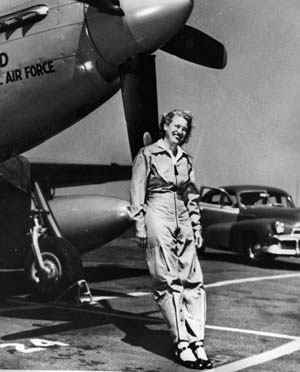
Cochran sensed early in the war that women would be needed as pilots, and she eagerly sought the opportunity to bring female aviators into the war effort. In September 1939 Cochran wrote to Eleanor Roosevelt, telling her that, given the dramatic events happening in Europe, it was not too soon to begin thinking about the idea of using American female pilots in noncombat roles, thus releasing men for combat duty overseas if the United States became involved. The effective use of women pilots, Cochran argued, “requires organization in advance.” She intended to organize such a group of female pilots. The First Lady thanked Cochran for her letter and assured her of women’s contributions in the war should the need arise. Ultimately, Roosevelt’s influence and support of women’s causes helped facilitate the establishment of the WASP program.
In March 1941, Cochran attended an aviation awards ceremony at the White House and met General Henry H. “Hap” Arnold, chief of the U.S. Army Air Corps, and Clayton Knight, who directed American recruiting efforts for the British Air Transport Auxiliary (ATA). After Congress signed the Lend-Lease Act into law on March 11, 1941, the ATA had the authority to ship or fly planes to England. With every possible qualified pilot involved in combat, the British ATA was desperate for recruits from neutral nations. The organization enlisted many of Britain’s female pilots to ferry planes around the United Kingdom. But the transoceanic hops necessary to deliver the bombers, Knight told Cochran, were proving to be a fearsome deterrent to his recruitment efforts.
Cochran offered Knight her help, and it was not long before she was piloting a Lockheed Hudson bomber from Montreal to ATA headquarters in Prestwick, Scotland, becoming the first woman to pilot a bomber over the North Atlantic. Cochran recruited a group of 25 American female pilots to serve in the British ATA and accompanied them to England for training with the British female pilots, who were already ferrying aircraft. While abroad, Cochran formulated a plan to create a similar program for female flyers in the United States.
Cochran and Love: Two Very Different Women
While Cochran was busy lobbying Washington to authorize a women’s military flying program, another well-known female aviator was quietly working on a plan to include female pilots in the war. Twenty-seven-year-old Nancy Harkness Love was a well-connected and highly experienced pilot who was married to Colonel Robert Love, deputy chief of the Air Transport Command. Nancy Love wrote to Colonel Robert Olds, who was then head of the Air Corps Ferry Command, with a proposition similar to Cochran’s—to enlist 50 to 60 women with extensive flying experience (at least 500 hours logged and a commercial pilot’s license) to ferry aircraft from factories to points of embarkation.
Cochran and Love could not have been more different in their personalities and personal ambitions. Cochran was determined, aggressive by nature, and persuasive. Despite her humble beginnings and lack of a formal education, Cochran learned to speak the language of the U.S. Army Air Forces (USAAF) and was unbending in her resolve to incorporate female flyers into the military’s war machine. Love, on the other hand, was a child of privilege. She was bright, well educated, and tenacious but sought only to join and influence the Air Transport Command—not to create an entirely new women’s flying program, as Cochran planned.
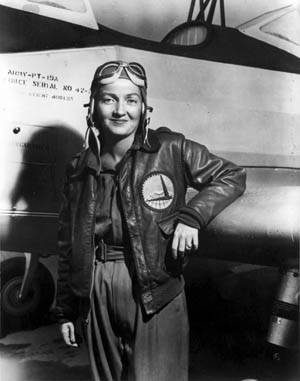
In contrast, Cochran desired full control, whereas Love was satisfied relinquishing many of the chief administrative duties for more time in the cockpit. Despite the differences in the two women’s understanding and use of power, they were somehow able to work together for two and a half turbulent years, though they seldom met face-to-face.
Love pushed for an elite group of female pilots on a squadron level to join either the Air Transport Command or Ferry Command as an auxiliary unit attached to the Air Corps. Cochran recommended the establishment, under her direction, of a complete, full-fledged women’s flying training program, geared to produce thousands of ferry pilots. Although Cochran ultimately prevailed, Love succeeded in creating the Women’s Auxiliary Ferrying Squadron (WAFS), whose members would be the first to fly aircraft from the factories to the air bases. The 28 original WAFS members had an average of 1,100 hours of flying time when they were accepted into the program.
Upon learning of Love’s new group of female ferrying pilots, Cochran convinced General Arnold that in light of the attack on Pearl Harbor and America’s entrance into the war, more female pilots were needed than the WAFS could supply. Arnold agreed, and on November 16, 1942, Cochran established the Women’s Flying Training Detachment (WFTD) at Howard Hughes Airport in Houston, Texas, with an initial class of 25 women, who were required to have 200 hours of flying and a commercial pilot’s license.
Cochran’s WFTD
The mission of the WFTD was to perform whatever flight duties the USAAF required within the United States. Like the WAFS, these pilots ferried planes, but they also tested and flew aircraft reported to have mechanical problems; delivered planes in need of fixing to repair depots; performed check flights on repaired planes; broke in new engines; towed targets for anti-aircraft gunnery practice; flew searchlight tracking missions; simulated bombing, strafing, and smoke-laying missions for troop training; moved aircraft from base to base; towed gliders; and instructed male pilot cadets.
When the classes outgrew their existing facility, Cochran’s female pilots moved to Avenger Field in Sweetwater, Texas. The west Texas town was small, dry, isolated, and wide open—the perfect place, Cochran thought, to train her female pilots to fly planes the Army way.
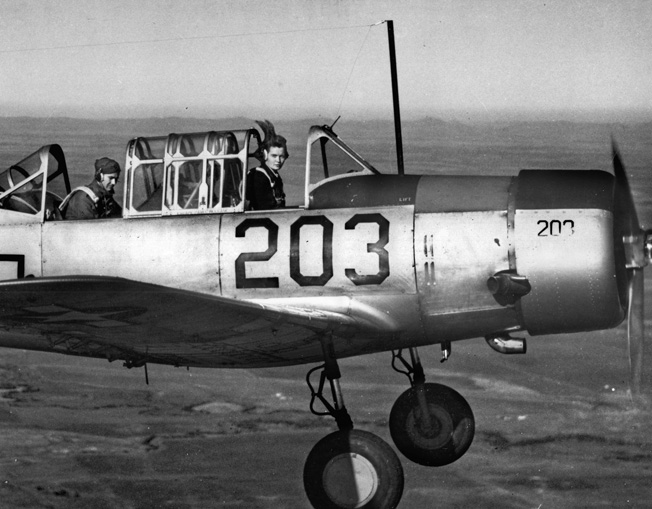
Once Cochran had the facilities and a base of trained female instructors, she began accepting female flight cadets into an intensive training program. The applicants, required to be experienced pilots, were found largely from a list maintained by the CAA of the country’s 3,000 licensed female pilots. As word leaked out about the women’s flying program, over 25,000 applications from all over the country poured into Cochran’s office. Women from a variety of backgrounds—actresses, secretaries, dancers, college students, nurses, mothers, and socialites—eagerly applied. Ultimately, 1,830 pilots were accepted into pilot training.
Forming the WASP
On August 5, 1943, the WAFS and WFTD merged to form the Women Airforce Service Pilots (WASP), with Cochran as director of the WASP and its training division, and Nancy Harkness Love as director of the Ferrying Division. In the 25 months the WASP program was in existence, 1,074 women successfully completed the grueling six-month training program at Avenger Field and earned their silver wings.
Despite the WASPs’ nonmilitary status, the women were required to adhere to Army regulations. They slept in barracks six to a room, with 12 sharing a single bathroom. “There was no privacy—none at all,” remembered WASP Marty Wyall. “We just learned to live together.” The all-women’s air base created a sensation, and in the first few weeks over 100 planes with male crews reported mysterious engine problems and requested emergency landings at Avenger Field. Cochran promptly banned all unauthorized landings, and Avenger Field became known as “Cochran’s Convent.”
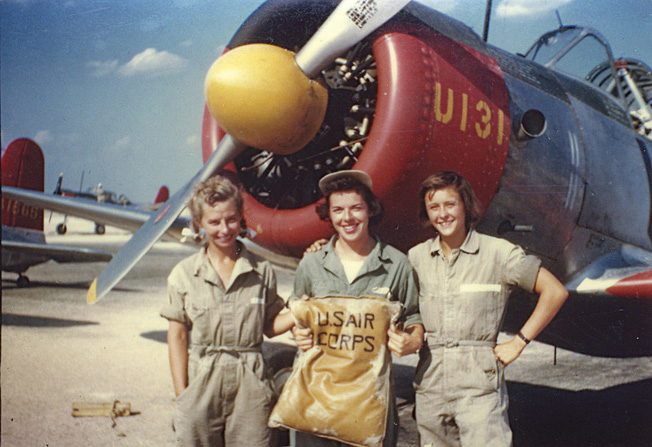
The WASPs, like many women in wartime America, yearned to do something meaningful to help the war effort. The unprecedented opportunity for these women to fly military aircraft for their country gave the pilots a unique sense of pride and purpose, and they welcomed the chance to do their part for Uncle Sam. Juliette Jenner Stege was a successful dancer on Broadway before becoming a WASP. “My friends in show business tried to convince me not to join the WASP,” said Stege, who graduated in the 44-W-3 class. “They would say to me, ‘You’re just a dumb chorus girl—you’re going to get yourself killed.’” Stege ignored her friends’ advice and took flying lessons on Long Island. “It’s important to learn not to say no,” she said. “You have to take risks in life.”
The trainees were awakened every morning at 6 am by the sounds of reveille. After breakfast their day was spent in physical training, ground school (which included instruction in mathematics, physics, map reading, chart reading and navigation, engines, weather, code, and communications), and flying. The pilots received more than 210 hours of military flight instruction at Avenger Field.
For flying, the WASPs were issued men’s flight suits that were many sizes too large for them. “Surplus Army mechanics’ olive drab overalls, size 44 and up, dubbed ‘zoot suits,’ replaced our civilian clothes, while cosmetics and fancy hairstyles became relics of the past,” WASP Doris Brinker Tanner later wrote.
The fear of every WASP trainee was “washing out” of the program. It was a genuine fear, too, as only the best pilots went on to earn their wings. After six months of military pilot training, the trainees gave a big sigh of relief once graduation day arrived.
“Fifinella”: A Mascot For the WASP
The female pilots caught the attention of Walt Disney, who had the artists at Walt Disney Studios design a cartoon mascot for the WASP. Most U.S. military units in World War II had cartoon mascots, which decorated everything from jackets to bombers. The WASPs’ “Fifinella,” or “Fifi,” as she was nicknamed, originated from the children’s book The Gremlins, written in 1942 by Roald Dahl, who was at the time a young RAF pilot. His book told of imaginary creatures that played tricks on pilots. He named male mischief makers “gremlins”; a female one was a “fifinella” or “fifi.” WASP felt Fifi was not as mischievous as a male gremlin. “She kept the sand out of your gas tank and kept the engine running,” said Nonie Horton Anderson. Betty Jane (“B.J.”) Williams added, “Fifi helped us come home safely.”
The WASPs Go to War
Following graduation, the WASPs were dispersed to air bases throughout the country, where they took up assignments transporting aircraft across the United States. They ferried the bulk of new aircraft from the factories to training bases and embarkation points and flew combat-weary planes to repair depots, then did the after-service checkout, often when male pilots would not. They towed targets for live ammunition antiaircraft battery practice, as well as air-to-air gunnery. The WASPs conducted weather reconnaissance and participated in smoke-laying missions during maneuvers. They were employed as instructors, and did everything from radio-controlled and instrument test flying to thousands of engineering tests and utility tests.
Some graduates, like Ann Baumgartner Carl, became test pilots. Many WASPs also went on to pursuit training, where they learned to fly fighters like the P-51 Mustang, while others became qualified to fly in bombers like the B-17 and B-29. Twenty-two-year-old Dora Dougherty Strother was one of only two WASPs chosen to fly the B-29.
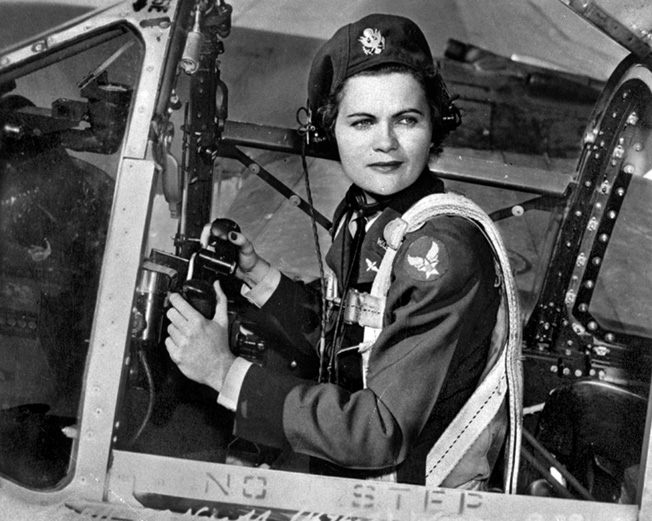
Lieutenant Colonel Paul W. Tibbets, Jr. (who later piloted the Enola Gay, which dropped the first atomic bomb on Hiroshima, Japan), recruited Strother and Dorothea “Didi” Johnson Moorman to fly the huge bomber to demonstrate to the male pilots that it could be flown. Tibbets was determined to prove to these men that not only could the B-29 be flown, but it could be flown by women. The women were given only three days training in Birmingham, Alabama, to learn how to fly the heavy bomber. After an anxious check ride when one of the engines caught fire, the WASP successfully flew the B-29 (christened Ladybird) to Clovis Army Air Field in New Mexico. In 1995 Strother received a letter from a male pilot who was on that historic flight: “I realize that it was a long time ago but I want to thank you for helping me that day at Clovis. You came to show us that the B-29 plane was not one to be feared. You were the pilot that day and you demonstrated your excellent flying skills and convinced us that the B-29 was a plane that any pilot would be proud to fly. From that day on we never had a pilot who didn’t want to fly the B-29.”
The WASP Militarization Bill
With each new success, Jacqueline Cochran was convinced that her WASPs were making a difference in the war. It troubled Cochran, however, that her female pilots were still considered only volunteer civil servants with no official military status. With General Arnold’s backing, Cochran helped to reintroduce a bill in Congress to make the WASP a women’s service within the U.S. Army Air Forces. (The first bill, introduced in September 1943, was ignored). On June 21, 1944, HR4219 (named the Costello Bill after Rep. John Costello of California, who introduced it) was defeated by 19 votes, despite vigorous lobbying efforts by Arnold and Cochran. Not since the beginning of the war had any legislation supported by the Army Air Forces been voted down.
There are many reasons for the defeat of the WASP militarization bill. By early 1944, air superiority had been achieved in Europe, and American male pilots began returning home. Flying schools were being shut down so civilian pilots were now faced with the draft—not to be pilots, but to be foot soldiers in the infantry. If the male pilots took over the WASPs’ flying jobs, they could avoid the draft. They launched an aggressive campaign against the WASPs in the media and on Capitol Hill. The protests of the male pilots coincided with a growing backlash against the idea of women “freeing men to fight” as men returned home from the war to find women in coveted flying positions.

Newspaper accounts from this period illustrate how traditionalists both in and out of Congress were becoming increasingly concerned about women’s growing independence and economic power and feared they would not return to their “rightful” roles of homemaker, mother, and low-wage employee when the war ended. These factors, accompanied by tremendous social pressures facilitated by the media, constituted a powerful lobby against passage of the bill that sought to militarize the WASPs.
The defeat of the Costello Bill meant that the WASPs would remain civil servants without the benefits given to full-fledged members of the U.S. military. The WASPs were denied benefits under the GI Bill, including life insurance, medical coverage, education assistance, and home mortgages. It was not until 1977 that President Jimmy Carter granted the WASPs veteran status. The WASPs felt the sting of their quasi-military status directly whenever a fellow pilot was killed.
Because they had not been officially accepted into the Army Air Forces, the government refused to pay for the bodies of deceased WASPs to be shipped home for burial or pay for funeral expenses. The female pilots collected the necessary funds themselves and often accompanied the bodies of their friends on the long train ride home.
The End of the WASP Program
The WASP program was cut short when it was officially terminated on December 20, 1944, eight months before the war ended; it was the first of the women’s services to be disbanded. In the words of WASP Doris Brinker Tanner, “The battle to give women equal opportunity in military cockpits was lost.” Although the airwomen proved that the experiment had been successful, the WASP program could not hold up under the social pressure brought on by negative publicity in the media and a powerful lobby of male civilian pilots who wanted the female pilots’ jobs.
After a lengthy battle for militarization, General Arnold and Jacqueline Cochran were forced to accept defeat. The stunned WASPs packed their bags and returned home, while planes remained at airfields across America waiting to be delivered until male pilots could be trained to fly them.
Despite criticism of the WASP program that developed in the media as a result of their attempt to militarize while male pilots returned from overseas duty, the female flyers earned the respect of male pilots as well as many top-ranking military officers. In the end, they proved that women were physically capable of piloting military aircraft.
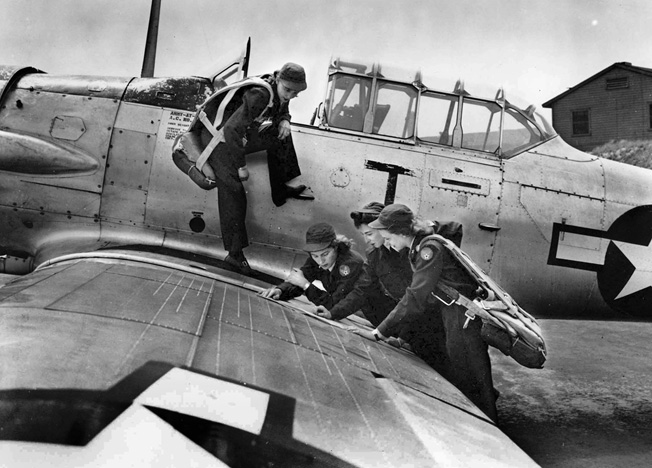
General Arnold, a staunch supporter of the WASPs, was the keynote speaker at the graduation of the last class on December 7, 1944: “We will not again look upon a women’s flying organization as experimental. We will know that they can handle our fastest fighters, our heaviest bombers; we will know that they are capable of ferrying, target towing, flying training, test flying, and the countless other activities which you have proved you can do…. We of the Army Air Force are proud of you; we will never forget our debt to you.”
The backlash of official government action against the WASPs hurt the pilots profoundly and bewildered them, but they clung to the knowledge that their service record had been outstanding. Some of the female pilots were later commissioned in the new U.S. Air Force, but not on flying status. The majority of the WASPs married, started families, or returned to college or their prewar jobs. Although some continued flying after the war, the WASPs forever cherished the memories of their days as America’s first female military pilots.
Marina Raskova
Thousands of miles away, another accomplished female flyer was preparing to organize a group of young female pilots to defend Soviet Russia. Marina Raskova, one of the most venerated and best-loved female aviators of the USSR, is largely unknown in the West. Founder of the world’s first all-female air regiments during WWII, Raskova, who rose to the rank of major, became the first female navigator in the Soviet Union and commanding officer of the 587th Day Bomber Aviation Regiment, subsequently renamed after her death, in 1943, as the 125th M.M. Raskova Borisov Guards Bomber Aviation Regiment. Raskova served as a role model for her fellow aviators, male and female, not only for her tremendous skill and personal courage, but for her ability to make decisions and lead under severe and often difficult circumstances.
Born in Moscow on March 28, 1912, Marina Mikhailovna Malinina aspired to be an opera singer, but a middle-ear infection at age 15 pushed her life down another path. Raskova chose instead to study chemistry and engineering and later mastered the theory of air navigation. She became the first woman in the USSR to earn the diploma of professional air navigator, going on to become an instructor at N. Ye. Zhukovsky Air Force Engineering Academy in Moscow.
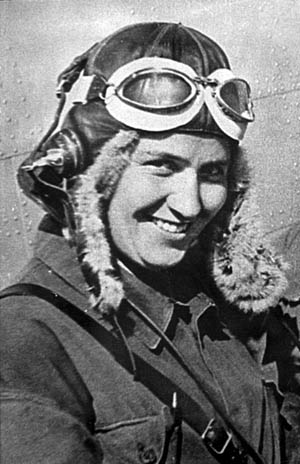
As an instructor, Raskova taught military navigation to male officers who, although initially skeptical of her knowledge and abilities, later admitted that they were now convinced of women’s capabilities in aviation. The academy rewarded Raskova by sending her to the Central Flying Club at Tushino, near Moscow, for flying lessons, which she completed in August 1935. After her training, Raskova became an instrument flying instructor and taught advanced navigation for command personnel.
By the mid-1930s, Raskova became involved in a greater number of important aviation-related events, and in August 1935 she took part in her first independent flight as a pilot. On July 2, 1938, Raskova again established a new women’s long-distance record when she flew (as navigator) with pilot Polina Osipenko and co-pilot Vera Lomako in an MP-1 nonstop from the Black Sea to the White Sea, having taken off in Sevastopol and landed in the vicinity of Arkhangel’sk on Lake Kholmovskoye. The route lay across four different air masses—tropical, continental, polar, and arctic—and required tremendous skills by the crew. The aviators set an international women’s straight-line distance record when they flew 3,695 miles. As a result of this record-setting flight, Senior Lieutenants Osipenko and Lomako, as well as Lieutenant Raskova, were awarded the Order of Lenin.
Historic Flight of the Rodina
Not long after this flight, pilot Valentina Grizodubova, with Stalin’s support, arranged for an aircraft to be assigned to them for a flight to the Far East (with Osipenko as co-pilot). It was an ANT-37 (a converted long-range DB-2 bomber) nicknamed Rodina (“Motherland”) by Grizodubova. In addition to flight training, the three women practiced firing rifles and pistols. The flight was delayed after Raskova developed appendicitis; in September 1938 a state commission canceled the flight because of the lateness in the year and anticipated bad weather. Stalin, however, overruled the decision, and the Rodina took off on September 24, 1938.
During the course of this mission, overcast skies completely obscured all visual landmarks, leaving radio signals as the only means of orientation. When the radio station ceased transmitting, there was nothing to do but continue on, the plane eventually running out of fuel. Raskova’s crew position in the nose of the aircraft was hazardous for a crash landing, so she was ordered to parachute from the plane over the taiga, a dense, swampy, forested area of Siberia. Raskova landed in the swamp, and it was not until 10 days later that she finally came upon her aircraft and was reunited with Osipenko and Grizodubova. The story of Raskova’s flight was widely publicized, and her courage and stamina caught the imagination of the Soviet people.
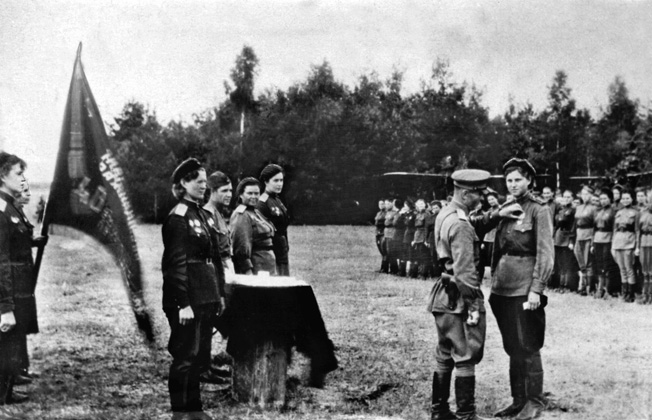
Raskova spent several months recovering from the leg injuries she sustained as a result of the historic flight. Not only had Raskova proven her courage and skill in flying, but her youthful beauty also helped to attract the interest of the Russian people. At age 26 she was a national celebrity, a recipient of the second Order of Lenin and the Gold Star of Hero of the Soviet Union. Raskova, Grizodubova, and Osipenko became the first women to receive the country’s highest honor and the only women to receive it before the war. The flyers were elevated to the equivalent status of American movie stars in the USSR, and they received significant attention from the press.
The 122nd Aviation Group
Raskova would inspire hundreds of young women to fly for the Soviet Union when the time came to defend it. Despite her fame and the pressures placed on her during the war, Raskova was known for her friendliness and her down-to-earth nature. She became the idol of many, including Soviet ace Lidiya Litvyak, who would become the first woman in history to shoot down an enemy aircraft; she reportedly kept pictures of Raskova in her notebook. The aircrew of the Rodina met for the last time on March 8, 1939, at the Pilots’ Club on International Women’s Day. Osipenko was killed two months later in a plane crash. Stalin served as one of the pallbearers at her funeral.
When Germany invaded the Soviet Union on June 22, 1941, Raskova, who was working as a civil defense volunteer at the time, began receiving hundreds of letters from female pilots eager to use their flying skills in the war. In October, after getting the full support of Stalin, Raskova set in motion a voluntary recruitment of female flyers, and the 122nd Aviation Group was born.
Raskova used her personal relationship with Stalin to convince him that female pilots should be used in the war. She also emphasized the young women’s strong patriotic feelings and their desire to fulfill their duty to their country. Despite those in the Kremlin who believed that combat was not a woman’s affair, Raskova’s persistence won out. Before giving her his blessing, however, Stalin reportedly cautioned Raskova, “You understand, future generations will not forgive us for sacrificing young girls.”
Three Female Combat Aviation Regiments
Three female combat aviation regiments were formed under the auspices of the 122nd Aviation Group: the 586th Fighter Aviation Regiment (Yak-1 fighters), which would later become part of the 270th Bomber Division of the Eighth Air Army; the 587th Day Bomber Aviation Regiment (Pe-2 bombers); and the 588th Night Bomber Aviation Regiment (Po-2 biplanes). In February 1943 the 588th was renamed the 46th Guards Night Bomber Aviation Regiment in recognition of its outstanding achievements, and the 587th Regiment became the 125th Guards Bomber Aviation Regiment.
The 46th was the only one of the three original regiments that remained exclusively female throughout the war (the other two regiments incorporated some men). The regiment flew a total of 24,000 combat missions and was the most decorated of the women’s regiments, with 23 of its members being awarded the Gold Star of the Soviet Union (by 1990), five of them posthumously. The female pilots would later be nicknamed Nachthexen (“Night Witches”) by their German counterparts, who came to fear their successful aerial tactics in the wooden Po-2 planes they flew on night missions.
In the Soviet Union, women took up arms themselves in defense of the Motherland. Nearly one million Soviet women fought in uniform and performed all kinds of combat duties during the war. In contrast, by the end of World War II, approximately 350,000 women had served in the U.S. military in noncombat roles. For Soviet women during the Great Patriotic War, the image of Mother Russia seemed to embody not only the caring and protective qualities of a mother, but also the self-sacrificing and courageous traits of a warrior, defending her country as she would her own child.
The Golden Age of Aviation
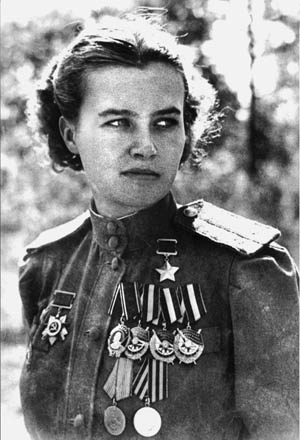
Not only was the 1930s a decade of rapid industrialization in the Soviet Union, but it was also considered the Golden Age of Aviation. There was a surge in aviation programs, both civilian and military. Because the Soviet Union had the distinction of being the first country in the world to proclaim legal equality for women in 1917, the military flying schools and Osoaviakhim (the Society for Cooperation in Defense and Aviation-Chemical Development) could not legally refuse entry to qualified women. It was through Osoaviakhim, a paramilitary organization, that most Soviet women received flight training.
Founded in 1927 to train teenagers and young adults in quasi-military skills such as defense and chemical warfare, marksmanship, and parachuting, by the 1930s Osoaviakhim began developing a network of air clubs to provide flight training in light aircraft. Officially, Soviet women were encouraged to participate in all facets of Osoaviakhim training, though many women encountered obstacles when applying. By 1941, 100 to 150 air clubs had been established; one out of every three or four pilots was a woman.
The female pilots and navigators who were recruited for Marina Raskova’s 122nd Composite Air Group soon after the German invasion were subjected to a rigorous training program and, in the case of the pilots, one that crammed nearly three years of flying experience into just a few months. The women’s instruction, equipment, and ultimate assignments were identical to those of their male counterparts.
A significant proportion of the ground crews attached to the regiments were women as well. Responsible for maintaining and preparing the aircraft for their often numerous daily missions, the armorers and mechanics handled ammunition boxes and machine-gun belts, made quick-time repairs, and attached heavy bombs, often working without cover in subzero weather. The ground crews were as dedicated as the aircrew, and they grew close to their pilots and aircraft.
Training For Combat
While Raskova set to work to form the women’s air regiments, the Germans were advancing closer to Moscow. Soviet citizens learned from radio reports that Moscow was in imminent danger of occupation. It was imperative that the female pilots be trained quickly so that they could participate in aerial combat in defense of their country. Raskova personally interviewed every volunteer. Most of the women wanted to be used as pilots, but navigators were badly needed too, and Raskova chose pilots with a technical education to fill the navigator slots.
A minimum of 500 flying hours was required of women who desired to serve as fighter or bomber pilots. Uniforms were issued, but as there were no women’s uniforms, the recruits were forced to wear the oversized flight suits of male airmen, similar to the clothing given to the WASPs. Pants could be hitched up with belts and the cuffs could be rolled up, but footwear was a problem. If the oversized uniforms made them look ridiculous, the men’s boots made the women look clumsy. Pilot Raisa Aronova recalled: “They gave us men’s clothing, right down to the underwear.”
The day after the women were issued their uniforms, Raskova received orders to send the aviation group immediately to Engels, a city on the Volga River north of Stalingrad, to complete the formation and training there. In Moscow there was panic among its citizens as the Germans drew closer. During the night of October 16-17, 1941, when the women departed for Engels, 100 trains carrying 150,000 people reportedly left Moscow.
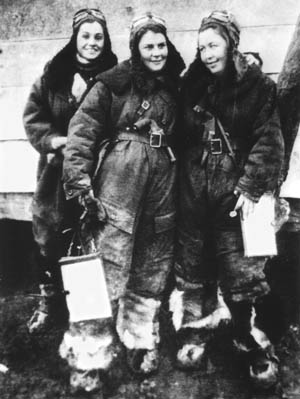
These first trainees were greeted by exceptionally cold weather after spending nine days on the train. Once they arrived in Engels, studies began in earnest. During the next few months, the members of the 122nd underwent an extremely condensed, intensive course of training. There were 10 courses a day plus two hours of drill; navigators studied Morse code for an additional hour and rose earlier than the other students, who slept on average five or six hours a night.
To prepare the trainees for the difficult conditions at the front, Raskova would sometimes sound an alarm in the middle of the night, requiring everyone to dress and form up outdoors by putting on their overcoats over their nightshirts, making them march around the airfield with the cold wind blowing on their bare legs. For many of the women who were barely out of their teens, military life was a difficult adjustment. Some of the girls had never been away from home before. Conditions were poor at the front, and the women were forced to cope with an entirely new way of life.
Marina Raskova oversaw all aspects of the women’s combat training. She drove herself hard and was sometimes so exhausted she did not have the strength to undress at night and slept on top of her bed in her uniform. To her trainees, she encompassed immeasurable energy and endur-ance. “When we were in training we would sit in our dugout around the stove and she [Raskova] would sing to us,” said Valentina Kravchenko, a navigator in the 587th Day Bomber Aviation Regiment. “She’d say, ‘Girls, when the war is over’ … and she’d look at us in our unattractive flying suits that made us look like bears … ‘After the war you’ll wear white dresses and pretty shoes, and we’ll have a big party. Don’t worry; we’re going to win the war.’”
The Tragic Death of Marina Raskova
Tragically, Raskova did not live to see victory. While in the process of transferring her regiment to the front at Stalingrad on January 4, 1943, the plane she was piloting crashed after being caught in a heavy snowstorm and dense fog, killing all four crewmembers aboard. Raskova, who had been commander of the 125th Regiment for only a few months, never got to experience combat herself.
Raskova’s death came as a great shock to her fellow pilots and countrymen. Her regiment pledged to become worthy of bearing Raskova’s name when the honorary title of Guards was conferred on it on September 23, 1943. For Galina Brok-Beltsova, a navigator with the 125th Guards Regiment, Raskova was a powerful role model to her young pilots. “For inspiration we had a portrait of Raskova at our base, and we each carried a picture of her in a pocket on the leg of our flight suits,” she said. “The pocket had a clear covering over it, so we could see her picture. We all called ourselves ‘Raskovsi,’ belonging to Raskova. She was brave, and so we were brave.”
Raskova was posthumously awarded the Order of the Patriotic War, First Class, and her ashes were interned in the Kremlin Wall beside those of Osipenko. Raskova had been acutely aware that she and her fellow female flyers were making history. In May 1942 she had told the members of the 588th, after accompanying them to the front near Stavropol: “I believe that all of you will come back as heroes. Epics and songs will be composed about you. You will be glorified by future generations.”
“We Were Keen to Show We Could Fight As Well As, If Not Better Than the Men”
By the late spring of 1942 the women received orders to go to the front. On the morning of May 23, 1942, garrison commander Colonel Bagaev made a short speech to the crews of the 588th who soon would be experiencing their first taste of combat: “Today, for the first time, a woman’s regiment leaves our airfield for the front. You do not fly on awesome machines, but on training aircraft. And it’s true that you yourselves are not excessively awesome in appearance. But I am certain that in these light-winged airplanes, you will be able to inflict heavy blows on your enemy. Let fly with you my fatherly wish: success to you and combat glory!”
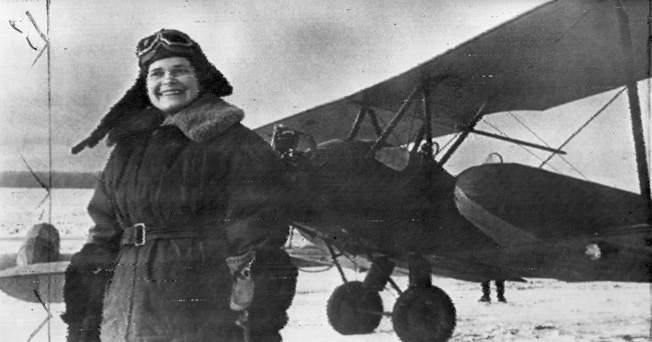
“The stress was huge,” said Irina Rakabolskaya, chief of staff of the 588th Night Bomber Aviation Regiment. “We were keen to show we could fight as well as, if not better than the men. When they first saw us, they didn’t take us seriously. They called us silly girls who should still be playing with dolls. They didn’t believe we could fly. They were very derogatory. But in six months, their attitude changed completely. In 1943 our regiment was the first in the division to be awarded the honor of becoming a Guards regiment.”
Litvyak: First Combat Kill of a Female Aviator
One of the best-known Soviet female pilots in the war, who became famous for being a double ace, was Lidiya (nicknamed “Lilya”) Litvyak. A senior lieutenant as well as a flight commander of the 73rd Guards Stalingrad-Vienna Fighter Regiment, 6th Fighter Division, Eighth Air Army, she also served in the 586th as well as two other fighter regiments. Born August 18, 1921, in Moscow, Litvyak learned to fly at a young age. Striking in appearance and small in stature, she made a powerful impression on everyone who came in contact with her. A lover of nature, she is said to have decorated the inside of her cockpit with wildflowers found near the airfield, and legend has it that she painted a white lily on the fuselage of her aircraft. No one could have predicted that this petite blond pilot (she had to have the pedals of her plane adjusted so she could reach them), who liked to fashion colorful neck scarves out of parachutes, would prove to be such a deadly adversary in the skies.
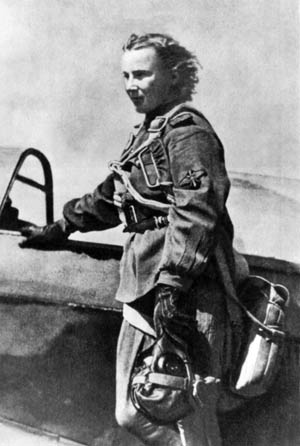
On September 13, 1942, Litvyak would go down in history as the first woman in the world to shoot down an enemy aircraft. She downed two German fighters that day in an intense air battle over Stalingrad that reportedly involved a German ace named Erwin Maier who was a three-time recipient of the Iron Cross. He had scored his 11th victory three days earlier. Maier was forced to bail out of his aircraft, and once captured on the ground, he asked to meet the Russian ace who had shot down his plane.
When the 21-year-old Litvyak stood before him, he stared in amazement. In disbelief he demanded proof that she had indeed been the pilot he had fought with. After Litvyak described in detail their dogfight (which had been her first), Maier was forced to believe her account. When Maier had accepted the bitter truth, he knelt down beside her and ceremoniously offered her his Swiss-made gold watch—a great luxury in Russia at that time. Litvyak’s response to the gesture was to say, “I do not accept gifts from my enemies,” after which she abruptly turned and walked away. For a pilot of her limited experience to achieve two kills in a single day (especially one involving a fighter ace) was an amazing accomplishment.
After being wounded on several occasions, Litvyak was reportedly shot down near the town of Krasny Luch in the Luhansk region of Ukraine on August 1, 1943, in an air battle in which approximately nine Soviet and 40 enemy aircraft took part. It was not until 1979 that the remains of a woman believed to be Litvyak were discovered near the Ukrainian village of Dmitreivka. Her body was said to have been found buried under the wing of a Yak-1. Because DNA testing was not available at the time, it has not been proven conclusively that the body of the female pilot recovered is Litvyak’s.
The Forgotten Contributions of Female Soviet Aviators
The young Soviet female flyers were fueled with intense feelings of patriotism and a deep desire to help their fellow citizens defeat the ruthless Nazi invaders. Like the American WASPs, they sought the opportunity to serve their country in its hour of need. The Russian women were in a unique position, however, to inflict direct blows to the enemy, and downing a German aircraft became retribution for the lost lives of their friends and fallen comrades.
Despite the female pilots’ proven heroism, the USSR soon forgot their wartime contributions. In 1945 Soviet society encouraged women who had fought at the front to discard their uniforms and return home to reestablish their prewar roles as housewives and mothers. After World War II, Soviet aviation remained off limits to women. It would be several decades before female pilots were given the opportunity to fly military aircraft again.
Fighting For Full Military Status
In 1972 the WASPs held a reunion in Sweetwater, Texas, and more than 300 WASPs, former flight instructors, and Army staff attended. Bruce Arnold, the general’s son and a retired Air Force colonel, arrived from Washington, D.C., in place of his late father, who had been an important advocate for the female pilots during the war.
At this historic reunion the WASPs made two important decisions. The first was to promise to meet every two years. The second decision, remarkably more ambitious than the first, was to right the wrong that had been done to them 28 years earlier and pursue a new militarization bill in Congress. With the women’s movement in full swing, and the offer of assistance by Bruce Arnold, who had been a legislative liaison for the Air Force, the WASPs believed that the timing was right for them to finally achieve their goal.
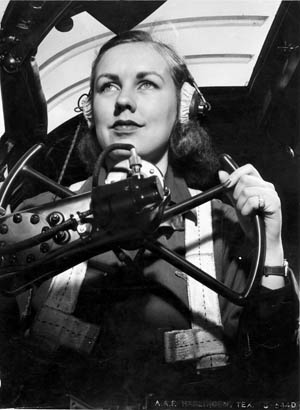
By the mid-1970s American women were signing up for the all-volunteer armed forces. For the first time in history, women were being admitted to the nation’s elite service academies. Ten women began training for the U.S. Air Force in September 1976 and were touted as the first women military pilots. The WASPs, who knew better, were insulted by their country’s short-term memory, and they worked even harder to bring their case to Capitol Hill and prove that they had been America’s first female military pilots.
Within a few months an amendment was added to a veterans’ bill in the U.S. Senate that would grant the WASPs full military status and make them eligible for veterans’ benefits—32 years after they had been deactivated. Senator Barry Goldwater, a former World War II Ferry Division pilot, who had been based at New Castle AAFB and had flown with the female ferry pilots, sponsored the bill.
It did not take long, however, for veterans’ organizations to come out against the amendment, as they did in 1944. Protective of their benefits, they argued that other groups, such as the Merchant Marines and the Civil Air Patrol, who also served during the war, might make similar claims to veterans’ rights. Collapsing under pressure, the House Veterans’ Affairs Committee killed the proposal. Senator Goldwater and Bruce Arnold promised the WASPs they would keep up the fight and not give up the battle in Congress.
The WASP Bill Passes
In March 1977 the WASP bill was reintroduced. This time, every female member of Congress co-sponsored the legislation. The WASPs’ cause caught the attention of the media, and all across the country WASPs circulated petitions and organized letter-writing campaigns. The former female pilots who gathered in Washington, D.C., worked hard to show members of Congress who and what they were—complete with scrapbooks, correspondence, photos, and official documents saved and treasured for more than 30 years.
Two months later, on May 25, 1977, WASP Dora Doughtery Strother testified before the Senate Veterans’ Affairs Committee. The testimony Strother gave outlined for the first time before Congress the history of the entire WASP program, highlighting the arguments that supported militarization. “This is the first time the rank-and-file members of the WASPs have had a chance to tell their story,” she said. “We have waited many years for this opportunity.”
Strother continued to point out the many aspects of the WASPs’ training as well as flying assignments during the war that were strictly of a military nature. The testimony she gave to Congress undoubtedly helped to clear up many misunderstandings that existed about the WASPs during World War II.
Despite strong opposition to the WASP bill by the American Legion and the Veterans Administration, the House passed the WASP amendment to the GI Bill Improvement Act of 1977 on November 3, 1977. The next day the Senate also approved the legislation. For the former airwomen who had worked hard to be recognized for their achievements during the war, 1977 would be called the year of the WASP. President Jimmy Carter signed the WASP bill into law on Thanksgiving Day, November 23, 1977.
Facing Danger and Discrimination
Despite being allies in World War II, the WASPs and Soviet female pilots seemed by many to be worlds apart in their ideology, wartime aerial missions, and military status. During the war the airwomen only heard rumors of the other group’s existence. Forty-five years after the end of the war, the American and Russian women aviators met face-to-face in a historic reunion in Moscow. The women who were at the 1990 meeting have commented on the strong bonds of sisterhood they experienced with their female counterparts. Even the use of translators did not inhibit their feelings of camaraderie that transcended cultural differences.
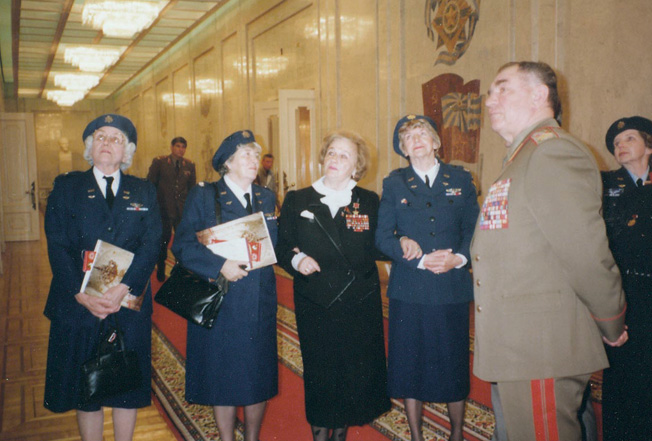
The dangers and risks inherent in the women pilots’ wartime flying assignments, coupled with their patriotic spirit and love of aviation, drew them close together in a way that only individuals who have faced fear and death intimately can know. Gender was the defining factor in both the creation and dissolution of both groups of airwomen. They suffered discrimination and prejudices from male aircrews and military personnel, and they also earned their respect. The women flyers’ very existence in wartime aviation challenged the assumptions of masculine authority and attempted to redefine existing gender boundaries.
But, as is often the case during a time of war when society is turned on its head, once stability and peace were reestablished, the American and Russian women pilots were told that their services were no longer needed. The return to prewar societal roles was emphasized in both countries, and the aviators who had sacrificed and achieved so much during the conflict, were prohibited from taking part in the postwar military.
Paving the Way For Gender Equality
The accomplishments of female pilots in the 1930s set an important precedent for the World War II airwomen to follow. Although it took another 30 years for American women to be allowed into the cockpits of military aircraft, and an additional 20 years before they would be allowed to fly in combat, without the achievements of the WASPs, it is unlikely that women’s presence in modern military aviation would have been assured.
For the Soviet female pilots, their participation in the Great Patriotic War resulted from a way of thinking that persists in Russia today. Perceived as temporary solutions to current problems, Russian servicewomen are not on a par with their male colleagues. Female military pilots were discouraged from seeking combat roles, and little evidence exists to show that they have been given the opportunity to fly in battle since 1945. In modern-day Russia, despite its deeply rooted socialist past that boasted gender equality, the idea of female soldiers is an anomaly.
In many ways, the experiences of the American and Soviet airwomen in World War II were exactly how one WASP described it: “a magical bubble—a lucky accident in history.” The female pilots did not immediately change the course of aviation history, nor were they successful in altering the societal norms of their day. But by their courage, professionalism, and determination, the first female military pilots in history, who spread their wings in World War II, set a precedent for subsequent generations of women in aviation.
On March 10, 2010, the Women Airforce Service Pilots were awarded the Congressional Gold Medal in a ceremony at the U.S. Capitol. Sixty-five years after the end of the war, the first women to fly American military aircraft were officially recognized by a grateful nation.
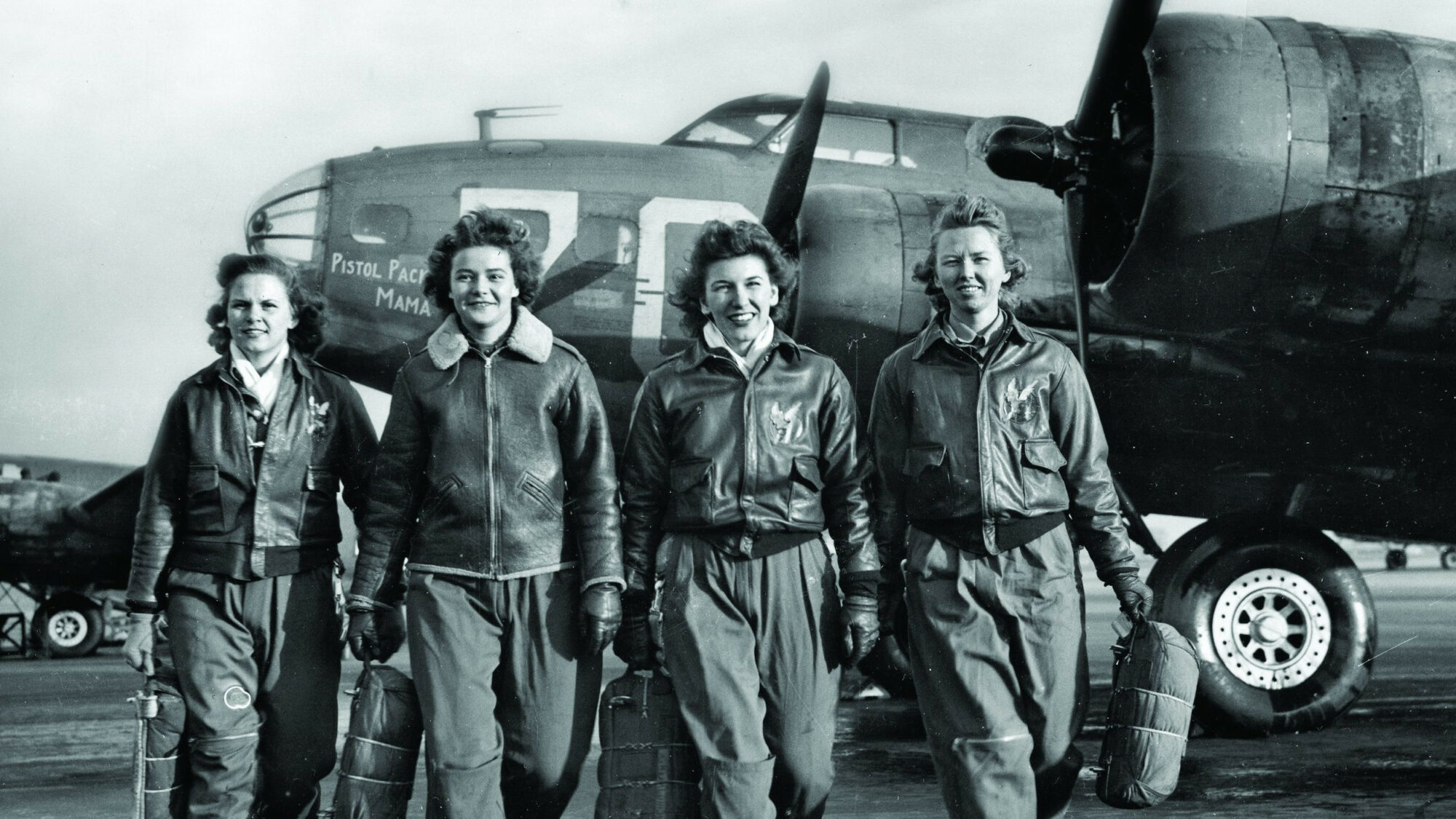
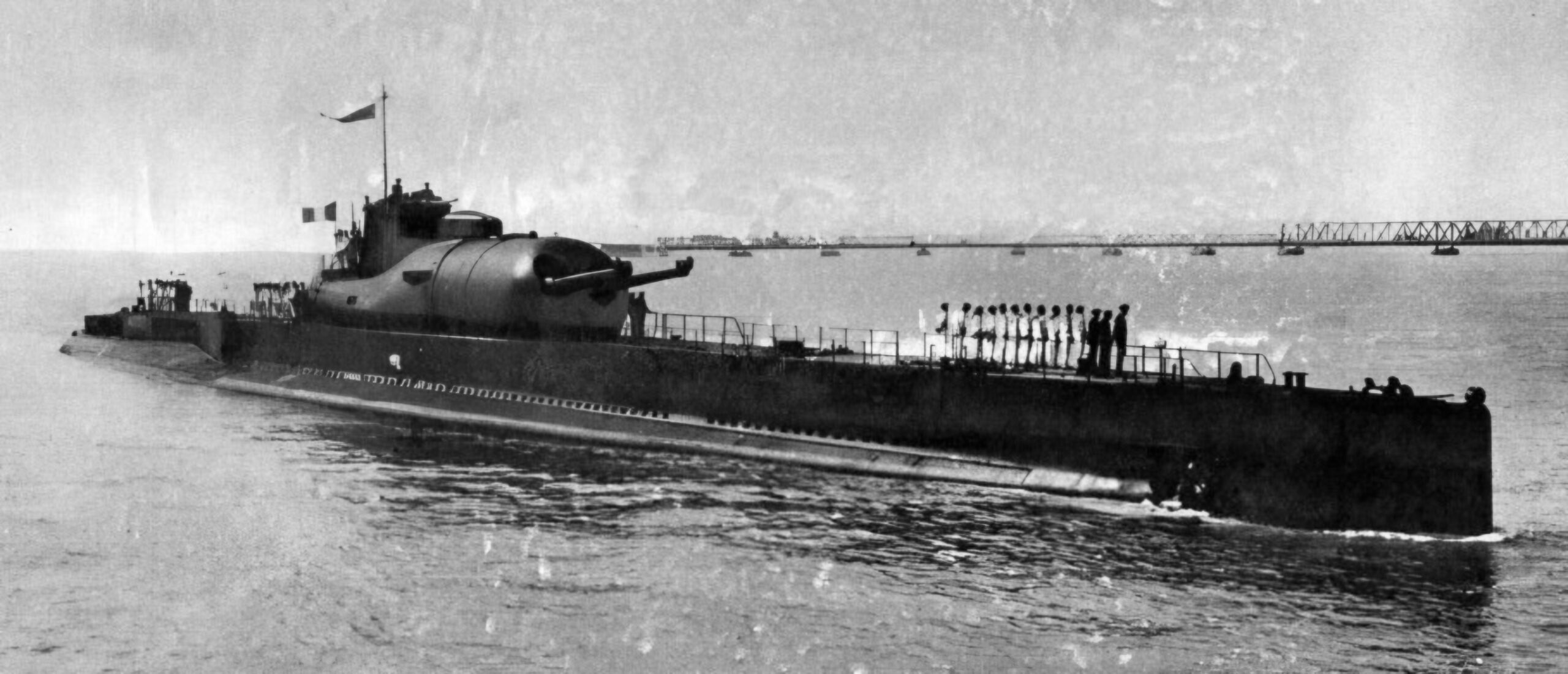
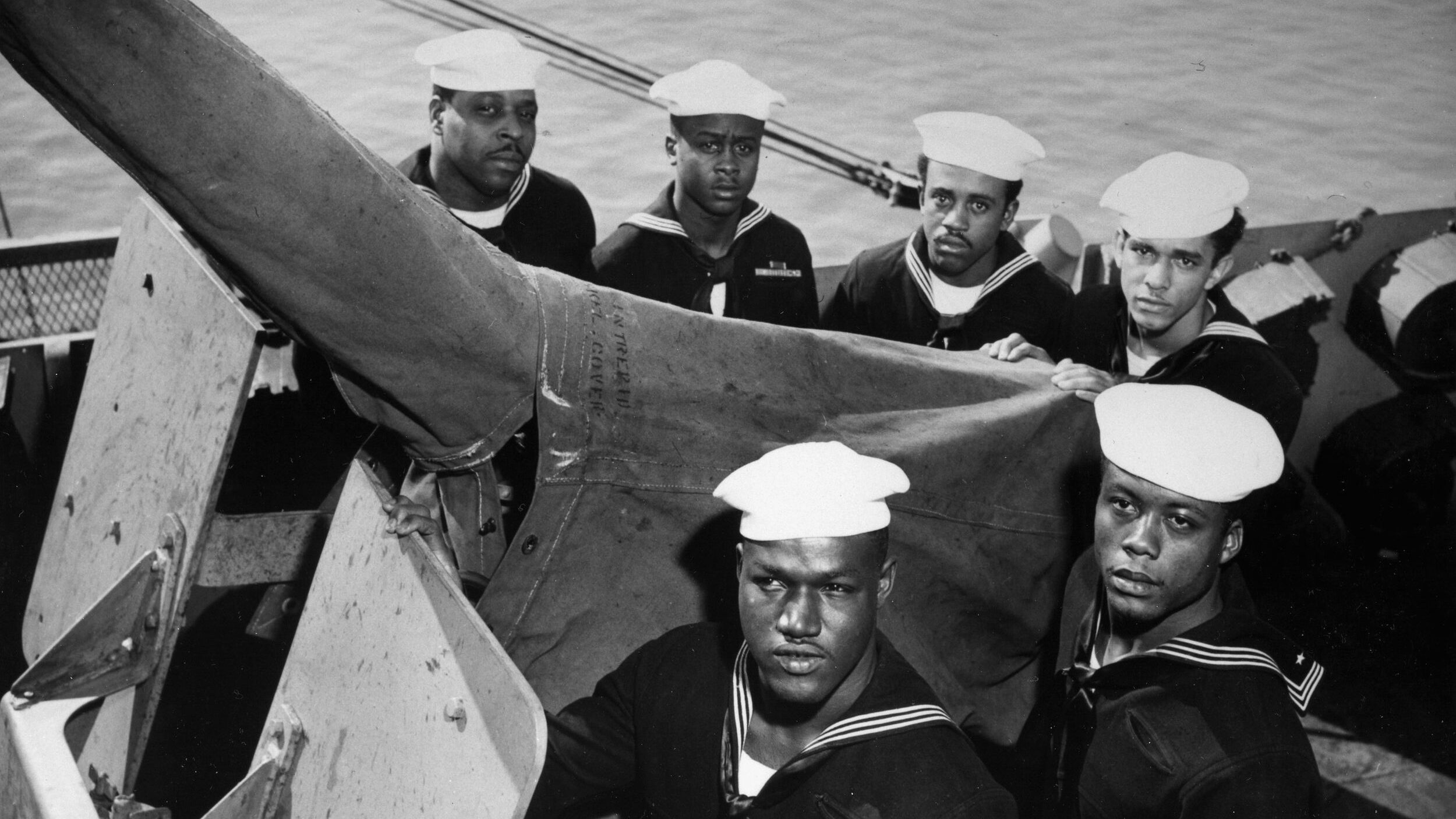
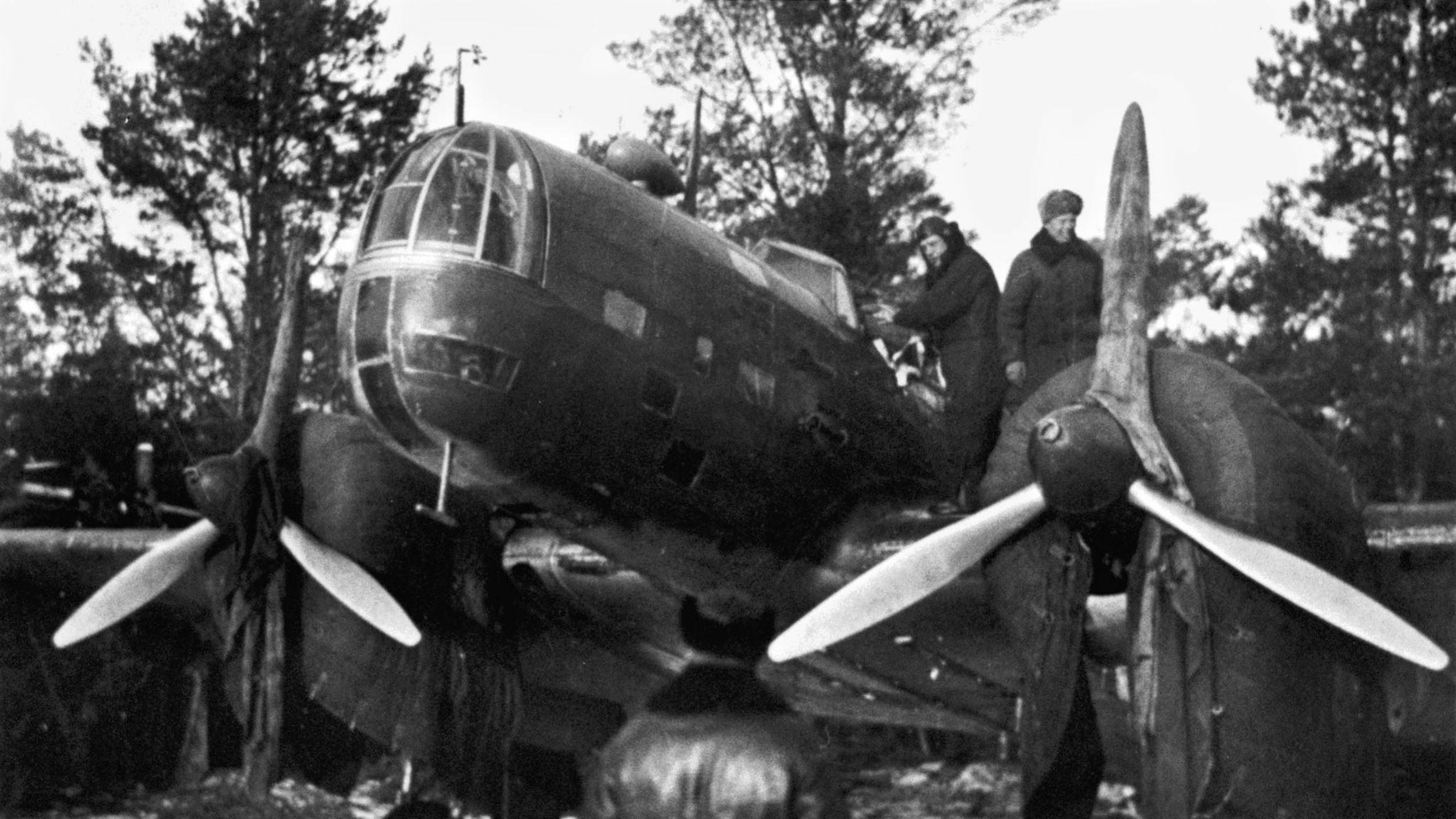
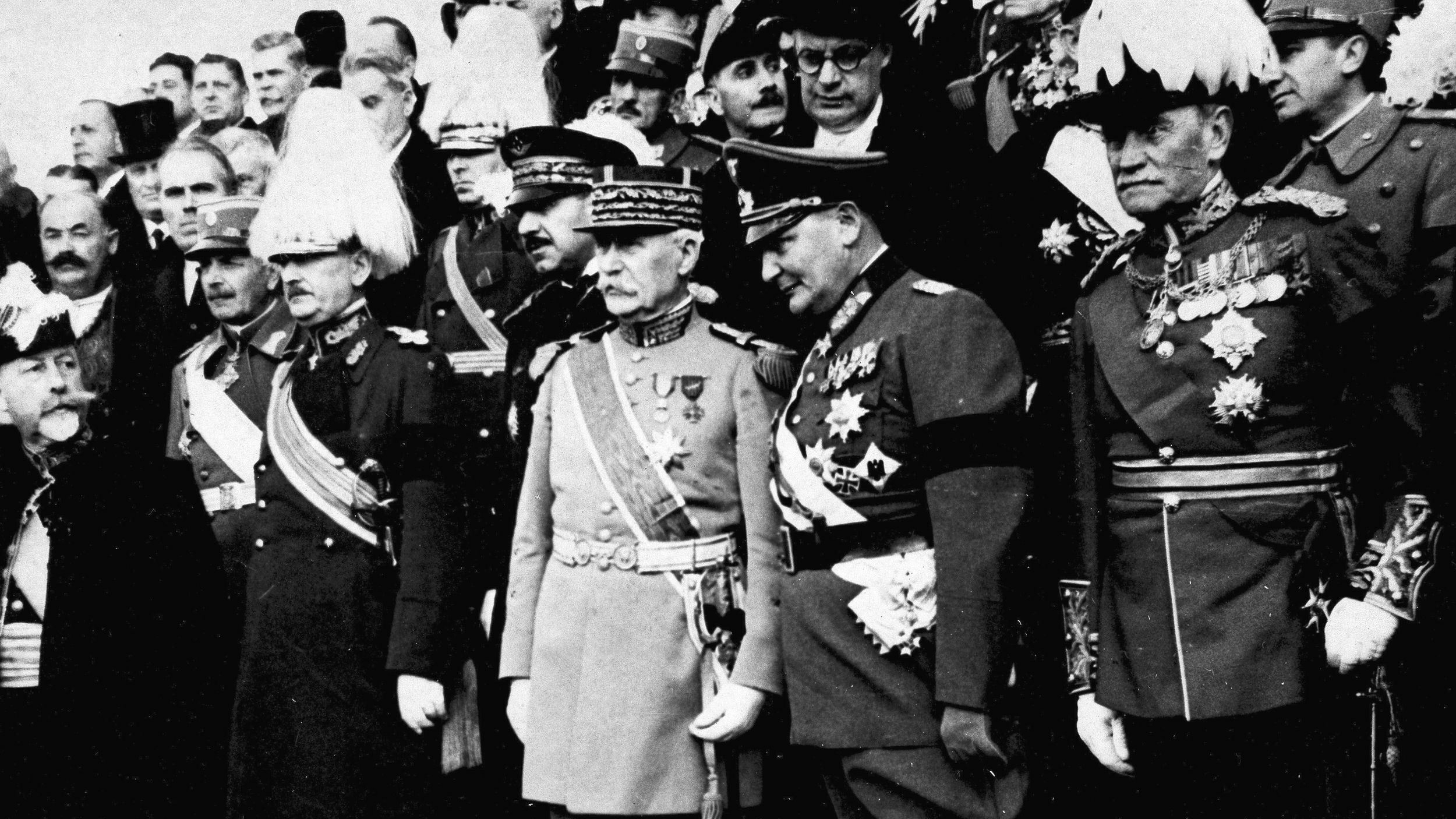
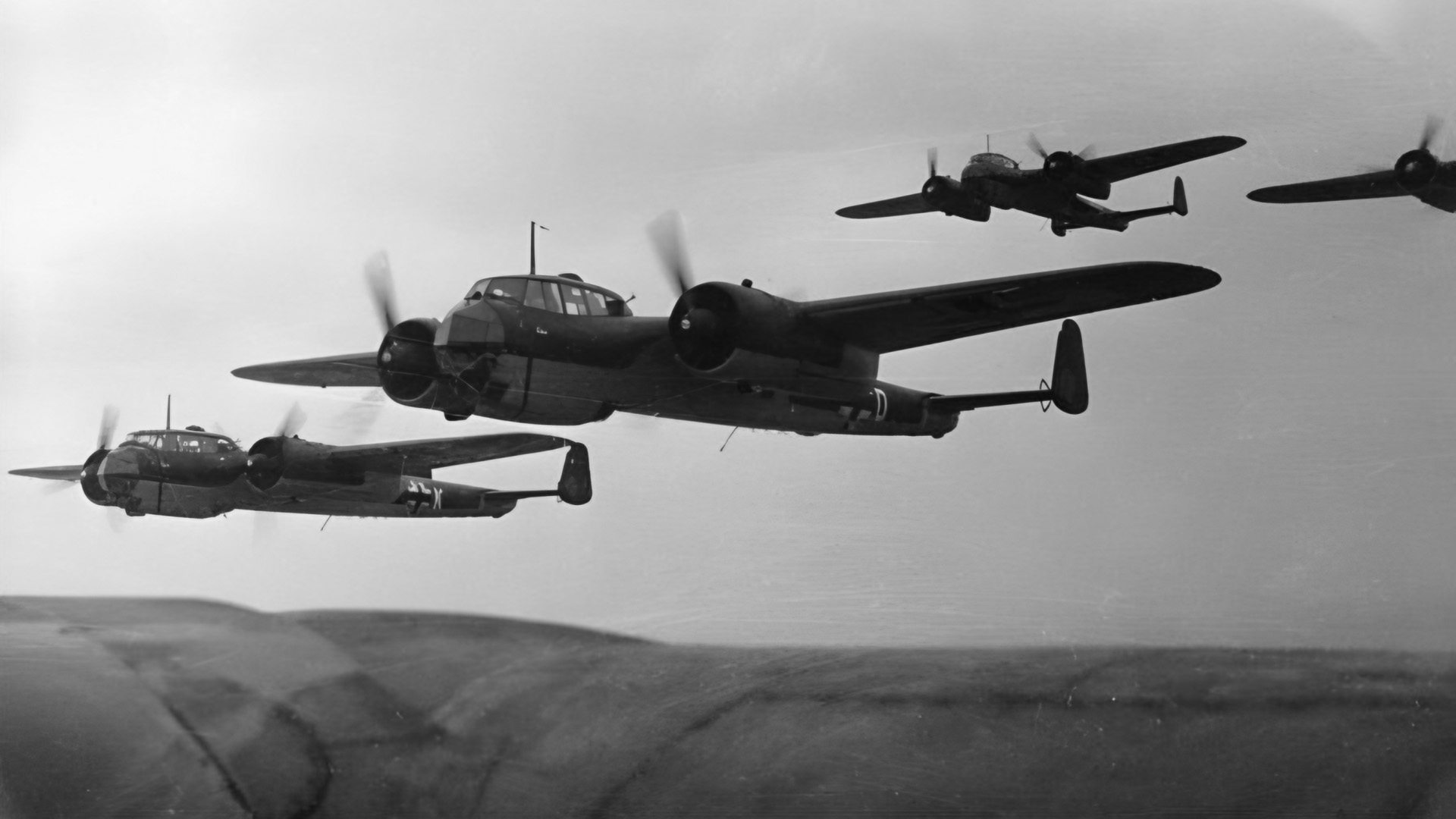
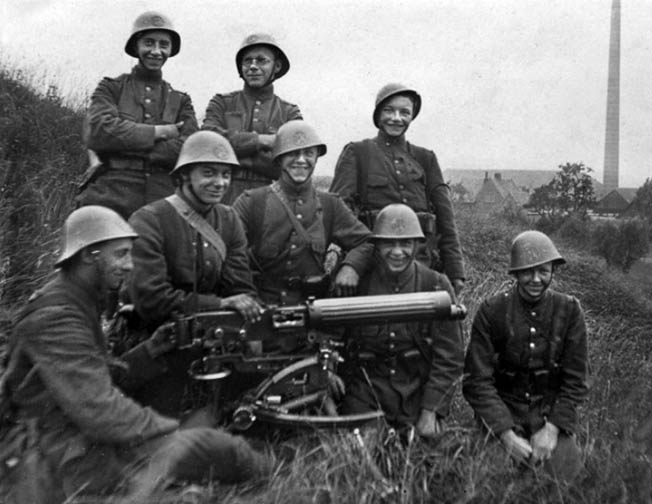
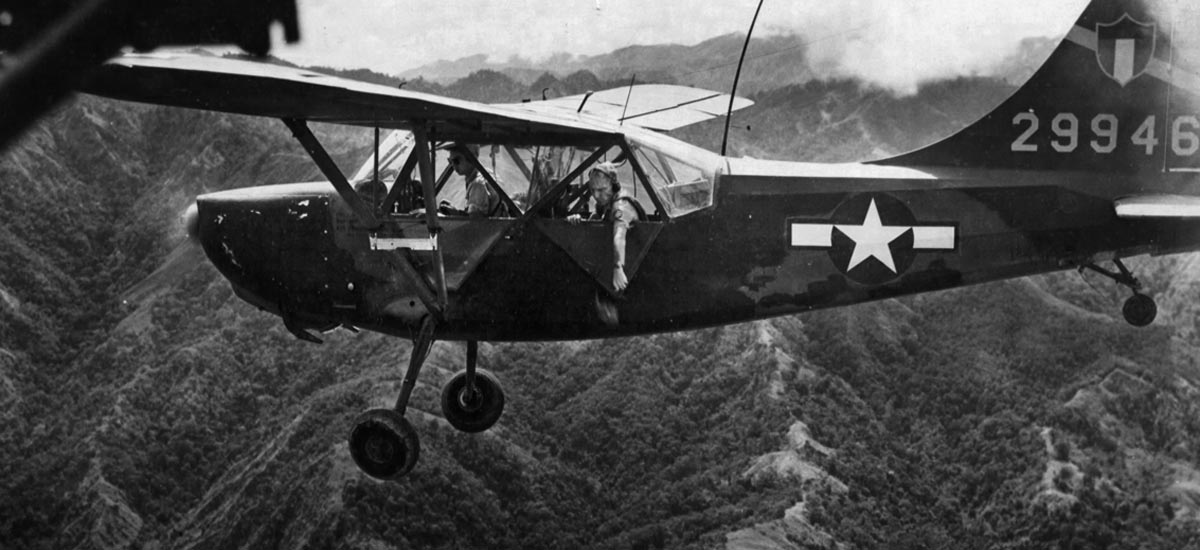
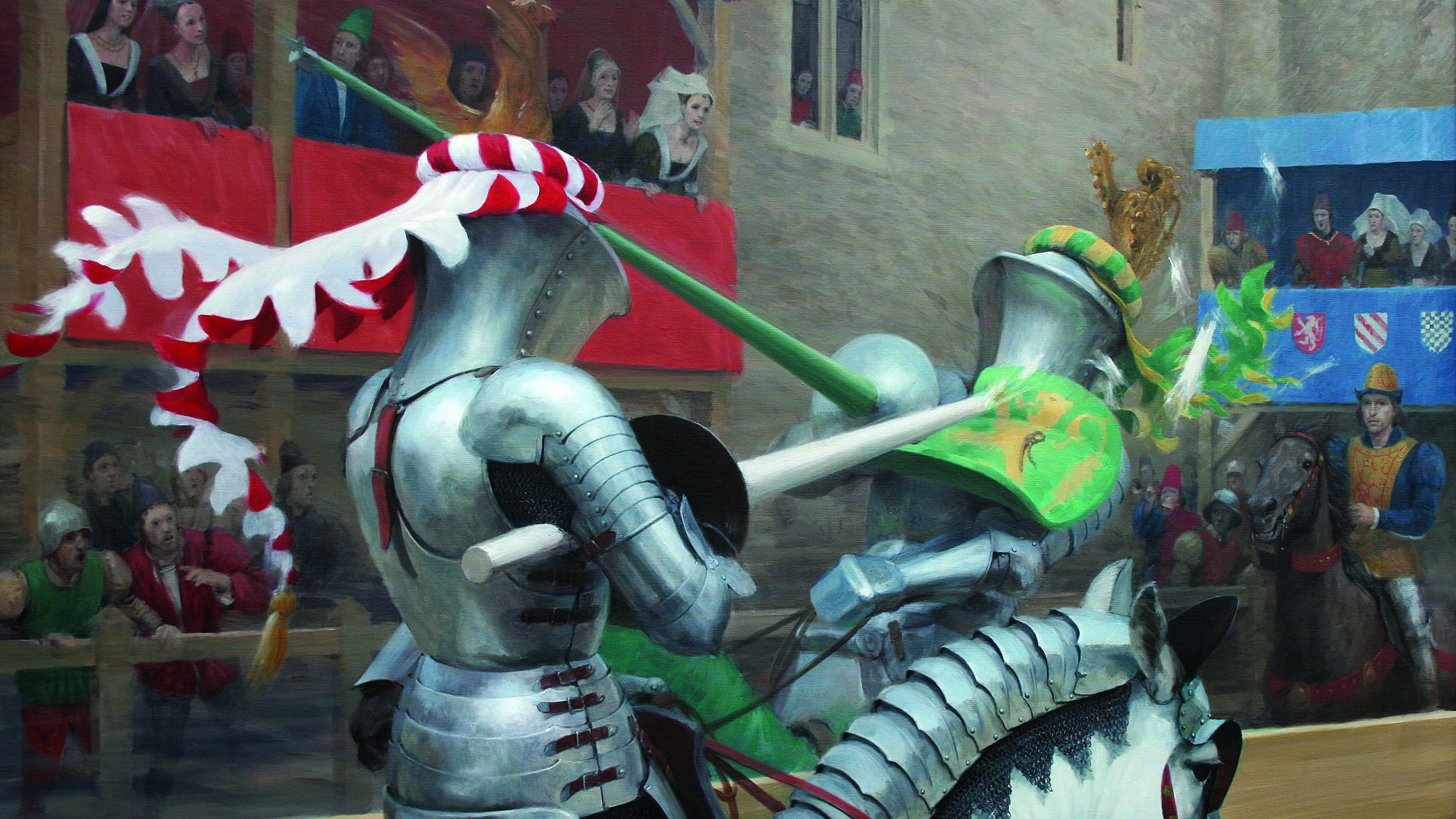
Join The Conversation
Comments
View All Comments